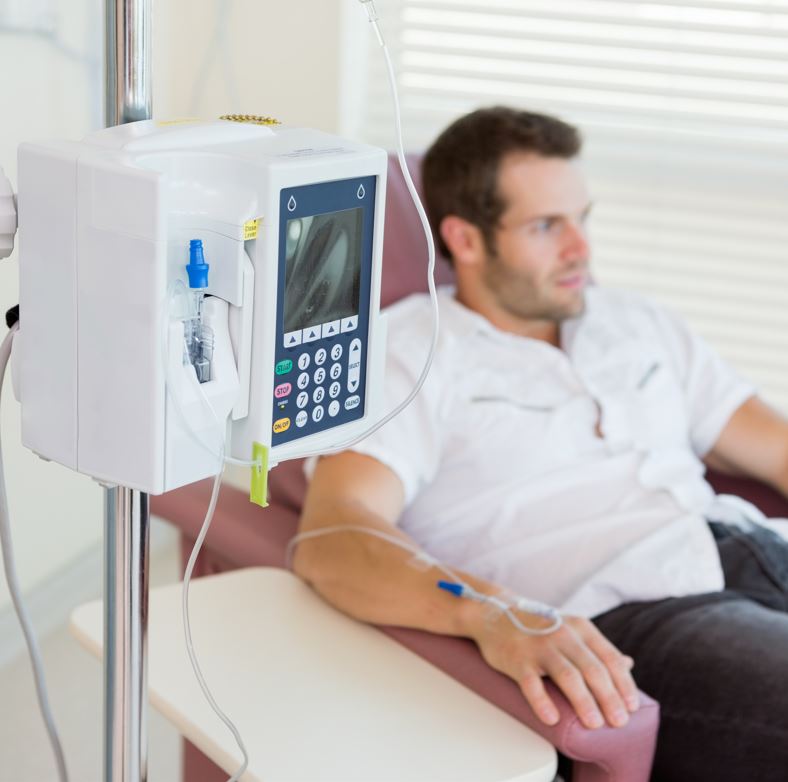Subtotal $0.00

Swiss Health Clinic AG
Stauffacherstr. 36
CH-8200 Schaffhausen
Shopping cart
- Phone:+41 (52) 56030-00
- Email:info@swiss-health-clinic.ch

Swiss Health Clinic AG
Stauffacherstr. 36
CH-8200 Schaffhausen

In the realm of alternative medicine, Chelation Therapy stands out as a method for detoxifying the body from heavy metals and toxins. Chelation therapy is a medical treatment designed to remove heavy metals and toxins from the body with the use of chelating agents. The accumulation of heavy metals like lead, mercury, arsenic, and cadmium in the body may hinder metabolic processes, leading to various health issues. Chelation aims to reactivate natural biochemical processes for healing and the elimination of pathologies associated with heavy metal poisoning.
Chelation therapy involves the administration of chelating agents to remove heavy metals and other toxic substances from the body. The word “chelation” is derived from the Greek word “chele,” meaning claw, and describes the process by which chelating agents bind to metals and form a complex that can be excreted from the body. Chelating agents, administered intravenously or orally, bind to heavy metals in the bloodstream to facilitate the excretion of metals through urine, effectively removing them from the body. Notable chelators include dimercaptosuccinic acid (DMSA), dimercaprol (BAL), edetate calcium disodium, and deferoxamine.
Chelation therapy is typically performed on an outpatient basis, meaning patients do not need to stay in a hospital overnight. Usually, the procedure requires only one day, but in some cases, the duration of the procedure can vary depending on the specific protocol and sessions prescribed by the healthcare provider.
Before undergoing chelation therapy, the patient undergoes careful evaluation by a qualified healthcare professional, where blood tests are conducted to assess metal poisoning levels, as well as other diagnostic evaluations to ensure the safety and efficacy of the treatment. Patients may also be instructed to avoid certain medications or dietary supplements that could interfere with the therapy.
During the therapy session, the chelating agent is administered either intravenously or orally, under the supervision of a qualified medical professional. The time it takes to administer the drug can vary depending on factors such as the type of chelator used and the dosage. Intravenous administration may take several hours, whereas oral administration may require multiple doses spread over a period of time.
After chelation therapy, patients may be advised to take certain precautions to optimize the effectiveness of the treatment and minimize potential side effects. This may include staying hydrated by drinking plenty of fluids to help flush out the chelated metals from the body. Patients may also be advised to follow a specific diet or nutritional regimen to support the body’s detoxification process.
Effective elimination of toxic metals like lead, mercury, arsenic, and cadmium from the body.
Chelating agents possess antioxidant properties, which help reduce oxidative stress and inflammation in the body.
Chelating therapy causes restoration of natural biochemical processes, and detoxify organs to bolster the immune system.
Chelation therapy in cancer treatment serves as an adjunct method by aiding in detoxification and Immunomodulation.
Acute mercury poisoning, Lead poisoning, Arsenic poisoning, uranium poisoning, and plutonium poisoning.
Thalassemia
Sickle cell disease.
Coronary artery disease, Peripheral artery disease.
Alzheimer’s disease, Autism spectrum disorder (ASD).